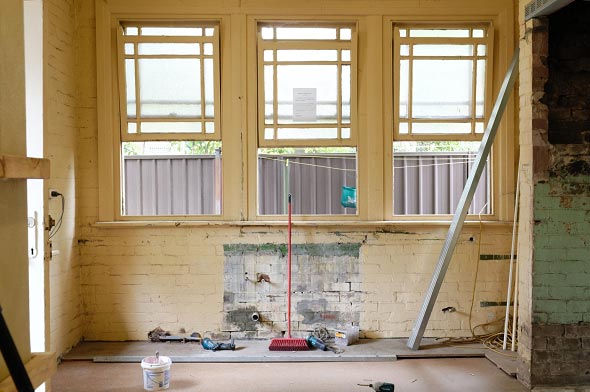6 Water Damage Reconstruction Do's and Don'ts.
6 Water Damage Reconstruction Do's and Don'ts.
Blog Article
The content which follows relating to Ways to Reduce The Risk Of Fire And Water Damage is seriously engaging. You should check it out.

Water offers life, however water invasion on some parts where it's not intended to be can result in damages and also trouble. In addition, homes with water damages odor old as well as moldy.
Water can originate from numerous sources like hurricanes, floodings, ruptured pipes, leakages, as well as drain issues. If you have water damages, it's much better to have a functioning understanding of security precautions. Below are a few standards on exactly how to handle water damages.
Do Prioritize House Insurance Coverage Coverage
Seasonal water damages can originate from floods, seasonal rainfalls, and also wind. There is also an event of an abrupt flooding, whether it originated from a malfunctioning pipeline that instantly breaks into your home. To protect your residence, obtain home insurance policy that covers both disasters such as all-natural calamities, and emergency situations like damaged plumbing.
Don't Forget to Turn Off Energies
When disaster strikes and also you remain in a flood-prone area, turn off the major electric circuit. Shutting off the power stops
When water comes in as water serves as a conductor, electrical shocks. Don't fail to remember to switch off the main water line valve as a means to avoid more damages.
If the floodwaters are obtaining high, maintain your furnishings steady as they can move and also create added damage.
Do Stay Proactive as well as Heed Climate Informs
If you live in a location plagued by floods, stay aggressive as well as ready at all times. Listen to the information and emptying cautions if you live near a body of water like a creek, river, or lake.
Don't Neglect the Roofing System
Your roofing professional ought to take treatment of the defective seamless gutters or any various other signs of damages or weakening. An inspection will stop water from flowing down your wall surfaces and soaking your ceiling.
Do Take Notice Of Small Leakages
A burst pipe does not take place in a vacuum cleaner or overnight. There are warnings that can attract your attention and show to you some damaged pipelines in your home. Indicators of warnings in your pipes consist of gurgling paint, peeling wallpaper, water touches, water discolorations, or trickling noises behind the walls. There are indications that the pipe will rupture. Don't wait for a rise if you see these signs. Repair work and inspect your plumbing repaired before it causes substantial damages to your house, financial resources, and a personal nightmare.
Do Not Panic in Case of a Ruptured Pipe
Timing is essential when it comes to water damage. If a pipe bursts in your home, quickly closed off your major water shutoff to cut off the source as well as stop more damages. Call a reputable water damages remediation expert for help.
Water offers life, yet water intrusion on some components where it's not expected to be can result in damages and also hassle. In enhancement, homes with water damages odor musty as well as old.
Seasonal water damages can come from floods, seasonal rains, as well as wind. Indicators of red flags in your pipes include bubbling paint, peeling wallpaper, water streaks, water stains, or leaking sounds behind the wall surfaces. If a pipeline bursts in your home, promptly closed off your main water valve to reduce off the source and protect against more damages.
Some Do's & Don't When Dealing with a Water Damage
DO:
Make sure the water source has been eliminated. Contact a plumber if needed. Turn off circuit breakers supplying electricity to wet areas and unplug any electronics that are on wet carpet or surfaces Remove small furniture items Remove as much excess water as possible by mopping or blotting; Use WHITE towels to blot wet carpeting Wipe water from wooden furniture after removing anything on it Remove and prop up wet upholstery cushions for even drying (check for any bleeding) Pin up curtains or furniture skirts if needed Place aluminum foil, saucers or wood blocks between furniture legs and wet carpet Turn on air conditioning for maximum drying in winter and open windows in the summer Open any drawers and cabinets affected for complete drying but do not force them open Remove any valuable art objects or paintings to a safe, dry place Open any suitcases or luggage that may have been affected to dry, preferably in sunlight Hang any fur or leather goods to dry at room temperature Punch small holes in sagging ceilings to relieve trapped water (don't forget to place pans beneath!); however, if the ceiling is sagging extremely low, stay out of the room and we'll take care of it DO NOT:
Leave wet fabrics in place; dry them as soon as possible Leave books, magazines or any other colored items on wet carpets or floor Use your household vacuum to remove water Use TV's or other electronics/appliances while standing on wet carpets or floors; especially not on wet concrete floors Turn on ceiling fixtures if the ceiling is wet Turn your heat up, unless instructed otherwise

We were made aware of that report on What You Can Do At Home To Prevent Fire And Water Damage through a friend on our other blog. Feel free to take the time to share this blog if you appreciated it. Thanks a bunch for your time. Visit us again soon.
Report this page